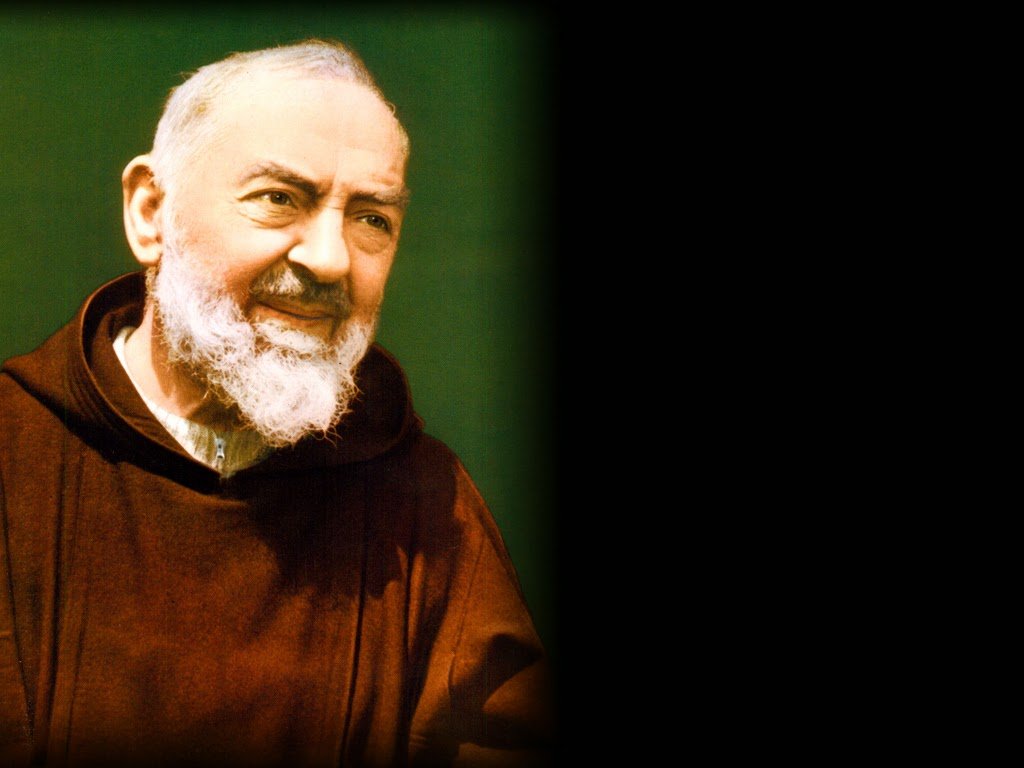

Padre Pio
One of the most popular Catholic saints of the 20th century, St. Pio of Pietrelcina, commonly known as Padre Pio, was a Capuchin Franciscan friar, priest, and mystic. His tomb can be found in the Sanctuary of St. Mary Our Lady of Grace in San Giovanni Rotondo, Italy.
Padre Pio is known for his deep wisdom about prayer and peace, his stigmata, miraculous reports of his bilocation, being physically attacked by the devil, and mastering the spiritual life.
As the Church celebrates his feast day on Sept. 23,
On Sept. 20, 1918, Padre Pio received the stigmata while praying in a church. The wounds remained visible on his body for the rest of his life. The wounds were on his hands, feet, and side, corresponding to the wounds suffered by Jesus during his crucifixion. Referred to as the “odor of sanctity,” the blood that came from Padre Pio’s wounds is said to have smelled like perfume or as having a floral aroma. The trait has also been exhibited by other saints who manifested stigmata markings.
While listening to confessions, the saint would smell flowers as sins were confessed. Some penitents waited two weeks just to visit him in the confessionial. Padre Pio could also read the hearts of penitents, reminding them of sins that were forgotten or omitted.
The saint once said: “Confession is the soul’s bath. You must go at least once a week. I do not want souls to stay away from confession more than a week. Even a clean and unoccupied room gathers dust; return after a week, and you will see that it needs dusting again!”
From a young age, Padre Pio was blessed with heavenly visions, but he also experienced spiritual warfare, including attacks of the devil. In a book written by Father Gabriele Amorth on Padre Pio, the famous exorcist of Rome said: “The great and constant struggle in the life of the saint was against the enemies of God and souls, those demons who sought to capture his soul.”
Amorth continued: “The devil appeared to him under many different forms: as a big black cat, wild and threatening, or as a repulsive animal, in the clear intention to frighten him; under the appearance of naked and provocative young girls who danced obscene dances, obviously to test the chastity of the young priest. However, the worst was when the devil took on the appearance of his spiritual director, or posed as Jesus, the Virgin Mary, or St. Francis.”
Multiple eyewitness accounts attest to the ability of Padre Pio to be in multiple places at once. Fellow friars remember seeing him in prayer outside when they knew he was still in his room. Some accounts come from others who claim to have seen him on different continents all over the world.
Among the most remarkable of the documented cases of bilocation was Padre Pio’s appearance in the air over San Giovanni Rotondo during World War II. While southern Italy remained in Nazi hands, American bombers were given the job of attacking the city of San Giovanni Rotondo. However, when they appeared over the city and prepared to unload their munitions, a brown-robed friar appeared before their aircraft. All attempts to release the bombs failed. In this way, Padre Pio kept his promise to the citizens that their town would be spared. Later on, when an American airbase was established at Foggia a few miles away, one of the pilots of this incident visited the friary and found, to his surprise, the friar he had seen in the air that day over San Giovanni.
A doctor examining the saint’s body who was present when he was dying observed that the wounds of the stigmata were completely healed, without any trace or scar. Padre Pio’s body was placed in a coffin in the church of the monastery to allow pilgrims to visit and pray.
Several miracles have been attributed to the saint’s intercession, including the story of Gemma di Giorgio, a little girl who visited Padre Pio. Born blind without pupils in either eye, she miraculously regained her sight after visiting him. One truly miraculous factor about her healing was that, although she could see, she still lacked pupils.
Beatified in 1999, St. Padre Pio was canonized on June 16, 2002, by the late pope St. John Paul II. He is known among Catholics as St. Pio of Pietrelcina. More than 500,000 attended his canonization.